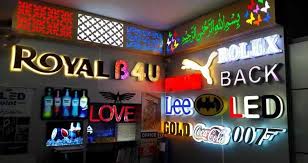

Introduction
In the bustling world of marketing and communication, where attention spans are dwindling and competition is fierce, signage boards have emerged as powerful tools for conveying information quickly and effectively. These visual displays play a vital role in various settings, from businesses to public spaces, guiding, informing, and even inspiring individuals. This article delves into the significance of signage boards, exploring their types, benefits, and the key role they play in modern communication.
Types of Signage Boards
Signage boards come in a variety of forms, each tailored to suit specific purposes and environments. Some common types include:
- Outdoor Signage: These boards are strategically placed outside establishments to attract attention and convey essential information. They can include building signs, billboards, street signs, and vehicle wraps.
- Indoor Signage: Found within buildings, indoor signage guides visitors, provides information, and enhances the overall experience. Examples include wayfinding signs, directional signs, and promotional displays.
- Digital Signage: With the rise of technology, digital signage has gained prominence. These dynamic displays utilize screens to showcase changing content, making them ideal for advertising, information dissemination, and engagement.
- Safety Signage: Essential for public safety, these signs communicate warnings, regulations, and emergency procedures. They are commonly found in workplaces, public transport, and public spaces.
- Retail Signage: Designed to influence consumer behavior, retail signage includes promotional displays, shelf tags, and window graphics, enticing customers and driving sales.
Benefits of Signage Boards
The importance of signage boards goes beyond mere aesthetics. They offer several advantages that contribute to effective communication and a better overall experience:
- Instant Communication: Signage boards quickly convey information, helping individuals make decisions without the need for extensive reading or interaction.
- Enhanced Visibility: Outdoor signage acts as a landmark, guiding people to their destinations. Eye-catching visuals and well-designed displays attract attention and create memorable impressions.
- Branding and Identity: Signage boards reflect a brand’s identity and values through consistent use of colors, fonts, and logos. This creates a strong brand presence and recognition.
- Cost-Effective: Once designed and installed, signage boards serve as a long-lasting communication tool, requiring minimal ongoing investment compared to other forms of advertising.
- Compliance and Safety: Safety and regulatory signs ensure the well-being of individuals by providing clear instructions and warnings, reducing accidents and liabilities.
- Flexibility: With digital signage, content can be updated remotely and in real-time, allowing for dynamic messaging and adaptability to changing situations.
Role in Modern Communication
Signage boards play a pivotal role in modern communication by addressing the evolving needs of an increasingly visual society. In a world inundated with information, these displays offer a concise yet impactful means of sharing messages. From guiding tourists in a busy airport to influencing purchasing decisions in a retail store, signage boards bridge the gap between intention and action.
Conclusion
In a world where communication is rapid and attention spans are short, signage boards have risen as essential tools for conveying information effectively. Through various types and benefits, they enhance visibility, strengthen branding, ensure safety, and influence behavior. As technology advances, the role of signage boards will continue to evolve, shaping the way we interact with and navigate our surroundings.
